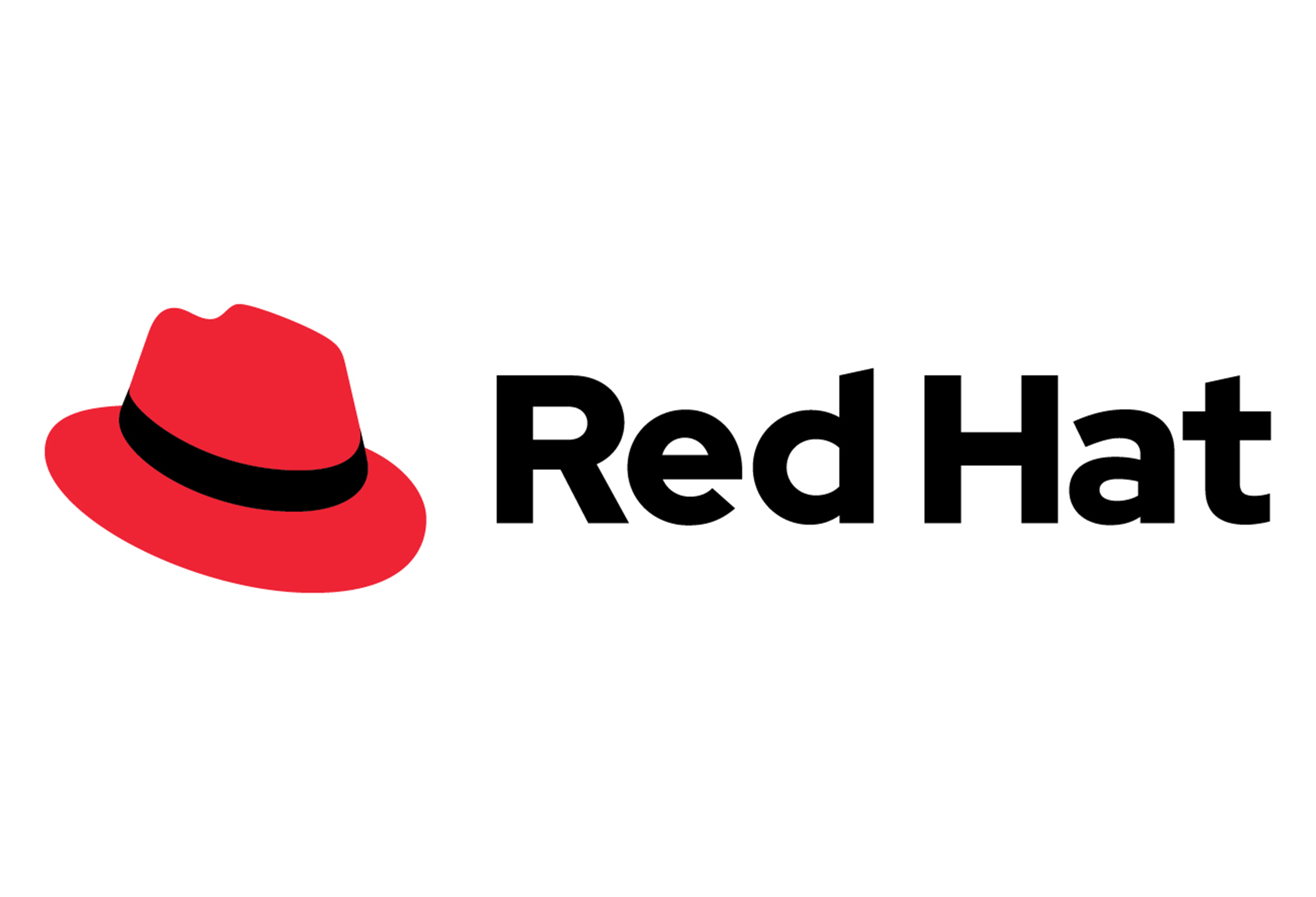
โดย แฟรงค์ เฟลด์มันน์ รองประธาน APAC Office of Technology เร้ดแฮทเอเชียแปซิฟิก
การเปลี่ยนแปลงที่เกิดขึ้น ไม่ว่าจะเป็นนโยบายทำงานจากที่บ้าน ไปจนถึงความต้องการของลูกค้าที่เพิ่มขึ้นทั้งด้านการบริการและต้องการประสบการณ์ที่ดีขึ้น ทำให้องค์กรต่าง ๆ จำเป็นที่จะต้องปรับตัวให้เร็วขึ้น เพื่อรับมือกับผลกระทบจากการแพร่ระบาดของโควิด-19 เร้ดแฮทคาดว่าแนวโน้มทางเทคโนโลยีจะยังคงมีการพัฒนาอย่างต่อเนื่อง เพราะการพึ่งพาเทคโนโลยีทวีความสำคัญมากขึ้นในสภาพสังคมและเศรษฐกิจในปัจจุบัน องค์กรในภูมิภาคเอเชียแปซิฟิก (APAC) ที่ต้องการอยู่ให้รอดจากสถานการณ์เช่นนี้ควรทบทวนกลยุทธ์ด้านดิจิทัลทรานส์ฟอร์เมชั่น โดยอ้างอิงจากแนวโน้มที่เร้ดแฮทคาดว่าจะเกิดขึ้นในปีนี้
5G, IoT และ Edge computing คือ สามเทคโนโลยีแห่งการเชื่อมต่อที่ชาญฉลาด
ภูมิภาคเอเชียแปซิฟิกจะพัฒนาเส้นทาง 5G ของตนอย่างต่อเนื่อง ในขณะที่บริการ 5G เชิงพาณิชย์ได้เปิดให้บริการแล้วในเก้าประเทศ รวมถึงเกาหลีใต้ ญี่ปุ่น และจีน และยังมีอีก 12 ประเทศที่ได้ประกาศแผนการทำนองเดียวกันนี้อย่างเป็นทางการ ความพร้อมในการใช้งาน 5G ที่เพิ่มขึ้นจะช่วยขับเคลื่อนอินเทอร์เน็ตออฟธิงค์ (IoT) และเอดจ์คอมพิวติ้ง (Edge computing) ที่ให้ค่าความหน่วงต่ำเป็นพิเศษ เครือข่ายแบนด์วิธที่สูง และรองรับการเข้าถึงอุปกรณ์ปลายทางของผู้ใช้จำนวนมากได้อย่างมีประสิทธิภาพ เช่น 5G, IoT และEdge computing สามารถนำไปใช้เพื่อการบริหารจัดการยานพาหนะในอุตสาหกรรมขนส่งได้อย่างชาญฉลาด อุปกรณ์ประมวลผลแบบ edge จะใช้ตรวจสอบระบบยานพาหนะที่สำคัญ ๆ ได้ และสามารถใช้เครือข่าย 5G
เพื่อส่งการแจ้งเตือน และติดตามเส้นทางในการขนส่งสินค้า การวางแผนเส้นทางต่าง ๆ รวมถึงอำนวยความสะดวกในการสื่อสารระหว่างยานพาหนะ และอุปกรณ์ที่ใช้ IoT ที่อาจส่งผลกระทบหรือได้รับผลกระทบจากยานพาหนะนั้น ๆ
เร้ดแฮทคาดการณ์ว่าในปี 2564 องค์กรและเมืองต่าง ๆ ในภูมิภาคเอเชียแปซิฟิกจะมีการใช้ 5G, IoT และ Edge computing เพื่อให้สามารถเชื่อมต่อและเพิ่มประสิทธิภาพ การใช้งานต่าง ๆ ที่เกิดขึ้นจากสามเทคโนโลยีนี้ รวมถึงการวิเคราะห์ข้อมูลที่ได้จากเซ็นเซอร์เพื่อคาดการณ์การบำรุงรักษาและการควบคุมคุณภาพ การใช้เทคโนโลยีโลกเสมือน (Augmented Reality – AR) ในการควบคุมการทำงานจากระยะไกล และ ‘ประสบการณ์เชื่อมต่อ’ เฉพาะบุคคลเพื่อการมีส่วนร่วมของลูกค้าและซัพพลายเออร์
ความปลอดภัยเป็นสิ่งสำคัญอันดับแรกสำหรับไฮบริดคลาวด์
ลูกค้าและพนักงานต่างคาดหวังให้มีแอปพลิชั่นทางธุรกิจและบริการที่มีความพร้อมสูงและมีความปลอดภัยให้ใช้งานได้ตามที่ต้องการเหมือน ๆ กัน เพื่อให้ตอบโจทย์ดังกล่าว เร้ดแฮทแนะนำให้องค์กรต่าง ๆ ใช้ระบบไฮบริดคลาวด์เพื่อให้การทำงานบนทุกสภาพแวดล้อม (เช่น แบบ on-premises, ไพรเวทหรือพับลิคคลาวด์) เป็นไปอย่างง่ายดายและรวดเร็วมากยิ่งขึ้น จากรายงาน 2021 Global Tech Outlook[1] ของเร้ดแฮทพบว่าภายใน 12 เดือนข้างหน้า 77% ขององค์กรในภูมิภาคเอเชียแปซิฟิกที่ตอบแบบสำรวจ มีแผนที่จะใช้แพลตฟอร์มคลาวด์มากกว่าหนึ่งประเภทไม่ว่าจะเป็นไพรเวทและพับลิคคลาวด์ โดยเพิ่มขึ้นจาก 53% จากการสำรวจของปี 2563 จากผลการสำรวจ เหตุผลหลักสามประการที่ทำให้องค์กรต่าง ๆ ใช้งานแอปพลิเคชั่นของตนผ่านไฮบริดคลาวด์ ได้แก่ เพื่อปรับปรุงความปลอดภัยของข้อมูล เพื่อเพิ่มความยืดหยุ่นด้านไอที และเพื่อจัดการรับมือกับปัญหาข้อมูลส่วนบุคคล
ความก้าวหน้าของการใช้ไฮบริดคลาวด์ขององค์กรต่าง ๆ ทำให้เรื่องความปลอดภัยจะยังคงเป็นประเด็นสำคัญที่องค์กรให้ความสนใจ เกือบครึ่งหนึ่งขององค์กรที่ทำการสำรวจทั่วโลกระบุว่า การรักษาความปลอดภัยบนคลาวด์เป็นสิ่งที่องค์กรให้ความสำคัญสูงสุดในการลงทุนในปีนี้ ความท้าทายเรื่องความปลอดภัยมีองค์ประกอบที่แตกต่างกันไป เช่น อุปกรณ์ปลายทางของผู้ใช้ เน็ตเวิร์ก และความปลอดภัยของข้อมูล วิธีหนึ่งที่จะเอาชนะความท้าทายเหล่านี้ได้คือการใช้กรอบการทำงานด้านการรักษาความปลอดภัยอัตโนมัติแบบเปิด ที่รวมแนวปฏิบัติในการรักษาความปลอดภัยต่าง ๆ เข้าไว้ด้วยกันโดยใช้ชุดเวิร์กโฟลว์อัตโนมัติ การดำเนินการดังกล่าวจะทำให้องค์กรสามารถมองเห็นการทำงานทั้งหมดได้ดีขึ้นผ่านฟังก์ชั่นรักษาความปลอดภัยทั้งหมด ช่วยให้ระบุภัยคุกคามหรือการโจมตีทางไซเบอร์ได้รวดเร็วมากยิ่งขึ้น
คลาวด์เนทีฟจะผลักดันให้มีการใช้คอนเทนเนอร์
แอปพลิเคชั่นแบบคลาวด์เนทีฟสามารถตอบสนองต่อการเปลี่ยนแปลง การนำไปปรับใช้ และการพัฒนาได้อย่างรวดเร็วด้วยคุณสมบัติและฟังก์ชั่นการทำงานแบบใหม่ ๆ ที่เพิ่มขึ้นอย่างสม่ำเสมอ รวดเร็วและเชื่อถือได้โดยมีความเสี่ยงน้อยลง เนื่องจากองค์กรจำนวนมากขึ้นมีการใช้ไฮบริดคลาวด์เพื่อเพิ่มความสามารถในการปรับขยาย และความพร้อมใช้งานของแอปพลิเคชั่น ทำให้บรรดาองค์กรที่ใช้การพัฒนาแบบคลาวด์เนทีฟอยู่ในสถานะที่ดีกว่าในการสร้างและใช้งานแอปพลิเคชั่น ที่สามารถตอบสนองได้ดีและปรับขนาดได้บนคลาวด์ทุกระบบ อีกทั้งยังสามารถทำงานต่อไปได้แม้จะเกิดความเสียหายบางส่วน
คอนเทนเนอร์เป็นเทคโนโลยีหลักที่จะปลดปล่อยคุณประโยชน์ต่าง ๆ ของการพัฒนาระบบคลาวด์เนทีฟ คอนเทนเนอร์ช่วยจัดรวบรวมและแยกแอปพลิเคชั่นด้วยสภาพแวดล้อมที่เป็นแบบรันไทม์ทั้งหมด ทำให้ง่ายต่อการโยกย้ายแอปพลิเคชั่นไปมาระหว่างสภาพแวดล้อมแบบต่าง ๆ โดยยังคงการทำงานได้อย่างเต็มรูปแบบ นักพัฒนาสามารถใช้คอนเทนเนอร์ในการเปิดใช้และอัพเดตแอปพลิเคชั่น ได้ง่ายขึ้นในรูปแบบของการบริการที่เป็นอิสระต่อกัน เช่น ไมโครเซอร์วิส แทนที่จะต้องรอการอัพเดทครั้งใหญ่เพียงครั้งเดียว การตระหนักว่าคอนเทนเนอร์ช่วยเร่งการสร้างสรรค์นวัตกรรมได้ ทำให้ 45% ของผู้ตอบแบบสอบถามในภูมิภาคเอเชียแปซิฟิกคาดหวังจะนำปริมาณงานกว่าครึ่งของตนมาเก็บไว้ในคอนเทนเนอร์ในอีก 12 เดือนข้างหน้า
ระบบอัตโนมัติจะทวีความสำคัญมากยิ่งขึ้น
ในขณะที่ลูกค้ามีความต้องการเพิ่มขึ้นอย่างรวดเร็ว สถาปัตยกรรมด้านไอทีเองก็มีการเปลี่ยนแปลงอยู่ตลอดเวลา และสร้างด้วยเทคโนโลยีที่ซับซ้อนมากยิ่งขึ้น อีกทั้งองค์กรต่าง ๆ ยังคงจำเป็นต้องสนับสนุนการทำงานจากที่บ้านในช่วงการแพร่ระบาดของโควิด-19 เพื่อให้สามารถรับมือกับความต้องการเหล่านี้ องค์กรในภูมิภาคเอเชียแปซิฟิกจึงหันมาใช้ระบบอัตโนมัติมากขึ้น เพื่อลดความซับซ้อน เพื่อเพิ่มผลผลิต และเพื่อลดต้นทุนในการดำเนินงาน อย่างไรก็ตาม เพื่อให้ได้รับประโยชน์จากระบบอัตโนมัติได้อย่างเต็มที่ จะต้องมีกลยุทธ์การใช้ระบบอัตโนมัติในภาพรวมทั่วทั้งองค์กร แทนที่จะมีการปรับใช้ระบบอัตโนมัติในการทำงานแบบแยกส่วน
มีองค์กรมากขึ้นที่หันมาใช้ระบบอัตโนมัติร่วมกับปัญญาประดิษฐ์ และแมชชีนเลิร์นนิ่ง เพื่อสร้างข้อมูลเชิงลึกแบบอัตโนมัติเพิ่มเติมขึ้นอีก เพื่อเพิ่มประสิทธิภาพของกระบวนการทางธุรกิจ ธนาคารในภูมิภาคเอเชียแปซิฟิกบางแห่งใช้ระบบหุ่นยนต์อัตโนมัติที่ทำงานแทนมนุษย์ (Robotic Process Automation: RPA) เพื่ออนุมัติการสมัครบัตรเครดิต การชำระเงินอัตโนมัติ และการตรวจสอบการอ้างสิทธิ์ เนื่องจาก RPA สามารถเรียนรู้เพิ่ม และลอกเลียนแบบการตัดสินใจและพฤติกรรมของมนุษย์ เพื่อสำเนาพฤติกรรมของผู้ใช้งานที่ปฏิบัติตามกฎที่ตั้งไว้ ช่วยลดเวลาในการทำงานเหล่านั้นได้เป็นอย่างมาก
วัฒนธรรมการทำงานแบบเปิดเป็นสิ่งจำเป็นที่จะช่วยส่งเสริมการปรับเปลี่ยนเทคโนโลยีให้ทันสมัย
ผลการศึกษาในเดือนพฤศจิกายน 2563 ที่สนับสนุนโดยเร้ดแฮท สำรวจพบว่า 80% ของผู้นำธุรกิจในเอเชียแปซิฟิกจัดลำดับให้การเปลี่ยนแปลงวัฒนธรรมในการทำงาน และการปรับเปลี่ยนเทคโนโลยีให้มีความ
ทันสมัยมากขึ้น มีความสำคัญเท่าเทียมกันในการทำดิจิทัลทรานส์ฟอร์เมชั่น คุณลักษณะทางวัฒนธรรมที่สำคัญสำหรับการเปลี่ยนแปลงนั้น รวมถึงความสามารถในการปรับใช้, การมีส่วนร่วมของบุคลากรในองค์กร, ความโปร่งใส และการทำงานร่วมกัน ซึ่งทั้งหมดนี้เป็นหลักการทำงานแบบโอเพ่นซอร์ส องค์กรที่สนับสนุนแนวคิดริเริ่มเปลี่ยนแปลงวัฒนธรรมในการทำงาน อันเป็นความพยายามในการปรับปรุงโครงสร้างพื้นฐานและสถาปัตยกรรมแอปพลิเคชั่นของตนให้ทันสมัยมาโดยตลอด จะสามารถพัฒนาและส่งมอบแอปพลิเคชั่นใหม่ ๆ ได้อย่างรวดเร็ว ตอบสนองความต้องการของลูกค้าได้อย่างฉับไว และควบคุมค่าใช้จ่ายในการบำรุงรักษาได้เป็นอย่างดี
ธุรกิจในภูมิภาคเอเชียแปซิฟิกตระหนักดีว่า ดิจิทัลทรานส์ฟอร์เมชั่นเกิดจากการปรับเปลี่ยนกระบวนการทางความคิด เราจึงคาดการณ์ว่าองค์กรต่าง ๆ จะเปิดรับหลักการ กระบวนการ และวัฒนธรรมแบบเปิดมากขึ้นและเมื่อมีการยอมรับแล้ว องค์กรต่าง ๆ จะสามารถรักษาความร่วมมือร่วมใจ และส่งเสริมให้พนักงานใช้ความคิดและตัวตนที่ดีที่สุดของตนมาใช้ในการทำงาน ซึ่งจะช่วยเร่งการสร้างสรรค์นวัตกรรม และรับมือกับความต้องการของลูกค้าและธุรกิจที่เปลี่ยนแปลงได้อย่างคล่องตัว
เหตุการณ์สำคัญระดับโลกในปี 2563 ทำให้องค์กรต่าง ๆ ตั้งเป้าสนใจเรื่องความอยู่รอดในระยะสั้นเพื่อส่งเสริมความต่อเนื่องทางธุรกิจ ในขณะที่ธุรกิจต่าง ๆ ยังคงมีการพัฒนาอย่างต่อเนื่อง องค์กรในภูมิภาคเอเชียแปซิฟิกจะต้องเตรียมความพร้อมสำหรับอนาคต ด้วยการนำโซลูชั่นเทคโนโลยีที่ยืดหยุ่น คล่องตัว และปรับขยายได้มาใช้กับธุรกิจของตน องค์กรต่าง ๆ ที่ต้องพัฒนาหรืออัพเดตแผนในการทำดิจิทัลทรานส์ฟอร์เมชั่นในปี 2564 นี้ ควรจะพิจารณาถึงเทรนด์ต่าง ๆ เช่น 5G และ Edge computing ไฮบริดคลาวด์ และระบบอัตโนมัติ ที่สามารถช่วยองค์กรได้
[1] 2021 Global Tech Outlook, A Red Hat Report, 1 December 2020, https://www.redhat.com/en/global-tech-outlook-report/2021
